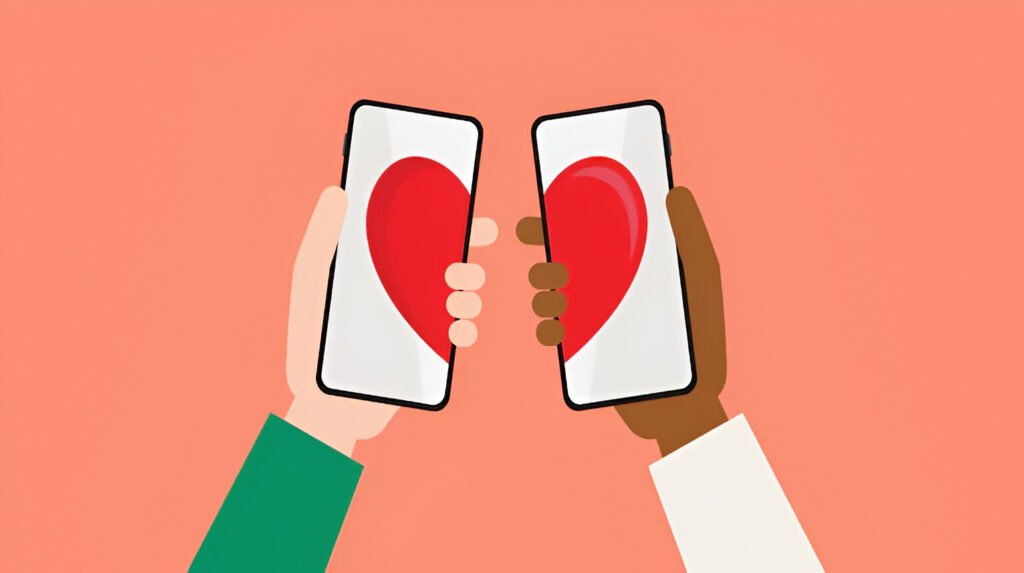
In a digital world where romance meets technology, dating apps have revolutionized the way people connect. But with this convenience comes a darker side: security risks that leave users vulnerable to cybercrimes. Recently, multiple dating apps were thrust into the spotlight as private photos of users were exposed to hackers in a series of disturbing incidents. While names of the affected apps are not disclosed due to privacy and legal concerns, these cases have alarmed users worldwide.
From leaked pictures to full-blown sextortion, these incidents have sparked urgent conversations around dating app security tips, how these dating app photo leaks happen, and what users can do to stay safe. Let’s dive into how this happened, what techniques hackers are using, and how you can protect your private data.
How the Dating App Photo Leak Unfolded
The leak was not the result of a single breach but rather a pattern observed across multiple platforms over time. Cybercriminals were able to access private photos of dating app users using a mix of technical vulnerabilities and social engineering tactics. In many cases, these photos were either uploaded by users in private chats or saved in cloud databases linked to their dating profiles.
Hackers exploited weak access protocols, poor encryption standards, and in some cases, even outdated third-party plug-ins used by the apps. While the companies themselves have not made full public disclosures, investigative reports confirmed that user photos were either directly accessed from app servers or obtained through interactions via fake profiles created by the hackers.
The incidents have not only raised questions about how dating apps store user data but also about the transparency of their security practices. In the age of swiping and super-likes, user safety is often an afterthought — until something goes horribly wrong.
How Hackers Steal Photos from Dating Apps
The techniques used by hackers to steal photos from dating apps are both technical and psychological. One common method is phishing, where users are tricked into clicking fake login pages or links that capture their credentials. Once logged in, the attackers can browse the user’s private media and download images.
Another method involves malware. Cybercriminals embed malicious code in files or links sent through chats, and once clicked, these files install spyware on a victim’s phone. This spyware can silently access the device’s camera roll, contact list, and even app data — including photos shared within dating apps.
A less technical but equally effective method is social engineering. This happens when a scammer builds trust with a user, requests personal photos, and then either leaks them online or uses them for sextortion. In such cases, the app itself might not be hacked, but the victim is emotionally manipulated into giving up private content willingly.
Real-Life Cases Show the Risks are Closer Than You Think
Though we won’t name the specific apps, recent news stories paint a disturbing picture of how real and widespread this issue is. In one instance from Delhi, a gang used fake dating profiles to lure people into video calls, recorded their private moments, and then extorted money by threatening to leak the footage. Victims were blackmailed for thousands of rupees, and multiple arrests were made after a thorough police investigation.
In another case from Kochi, a student leader’s social media photos were copied and used to create a fake profile on a dating app. That profile was used to send indecent messages to others, damaging the student’s reputation. The psychological trauma and potential for professional damage in such impersonation cases are huge.
Yet another example comes from Bengaluru, where a man was lured into an intimate video chat. Unbeknownst to him, the interaction was recorded. The fraudsters later demanded over ₹2.5 lakh to prevent the release of the video — a classic sextortion trap. These real-life examples show just how easy it is for users to fall prey, especially when privacy is taken lightly.
How to Protect Photos on Dating Apps
With photo leaks becoming more common, it’s important to know how to guard your privacy while using dating platforms. Start by limiting the amount of personal content you share. Don’t upload photos that you wouldn’t be comfortable becoming public. Even if the app claims your pictures are “private,” breaches happen — and once leaked, it’s nearly impossible to undo the damage.
Next, avoid using the same password across multiple platforms. Use a password manager to generate and store complex, unique passwords for each account. Combine this with two-factor authentication (2FA) wherever available to add another layer of security.
Also, be wary of suspicious profiles or users who rush into asking for private information or suggest moving the conversation to another platform. Most scams escalate once you’re off the dating app and in less regulated environments like WhatsApp or Telegram.
Regularly update your dating apps and operating system. Developers often release security patches to fix known vulnerabilities. Ignoring these updates could leave your app exposed to existing exploits.

Dating App Security Tips You Should Follow
Securing your data on dating platforms isn’t just about protecting photos — it’s about adopting a mindset of digital caution. First, read the privacy policy of any app you sign up for. Understand what data is collected, how it’s stored, and who has access to it.
Then, adjust your profile visibility settings. Many apps offer control over who can see your photos or personal details. Make use of these features to limit exposure.
If someone starts behaving inappropriately, report and block them immediately. Most dating apps have built-in tools for flagging suspicious behavior, and your report might save someone else from being targeted.
Lastly, stay informed. Keep up with the latest news on dating app scams, and talk to friends or communities about their experiences. The more you know, the better equipped you’ll be to spot red flags and avoid becoming a victim.
Final Thoughts
The recent revelations about dating app photo leaks have brought to light just how vulnerable users are in the digital dating space. While the responsibility of securing user data ultimately lies with the app developers, users must also take proactive steps to stay safe. From understanding how hackers steal photos to applying everyday dating app security tips, awareness is your best line of defense.











